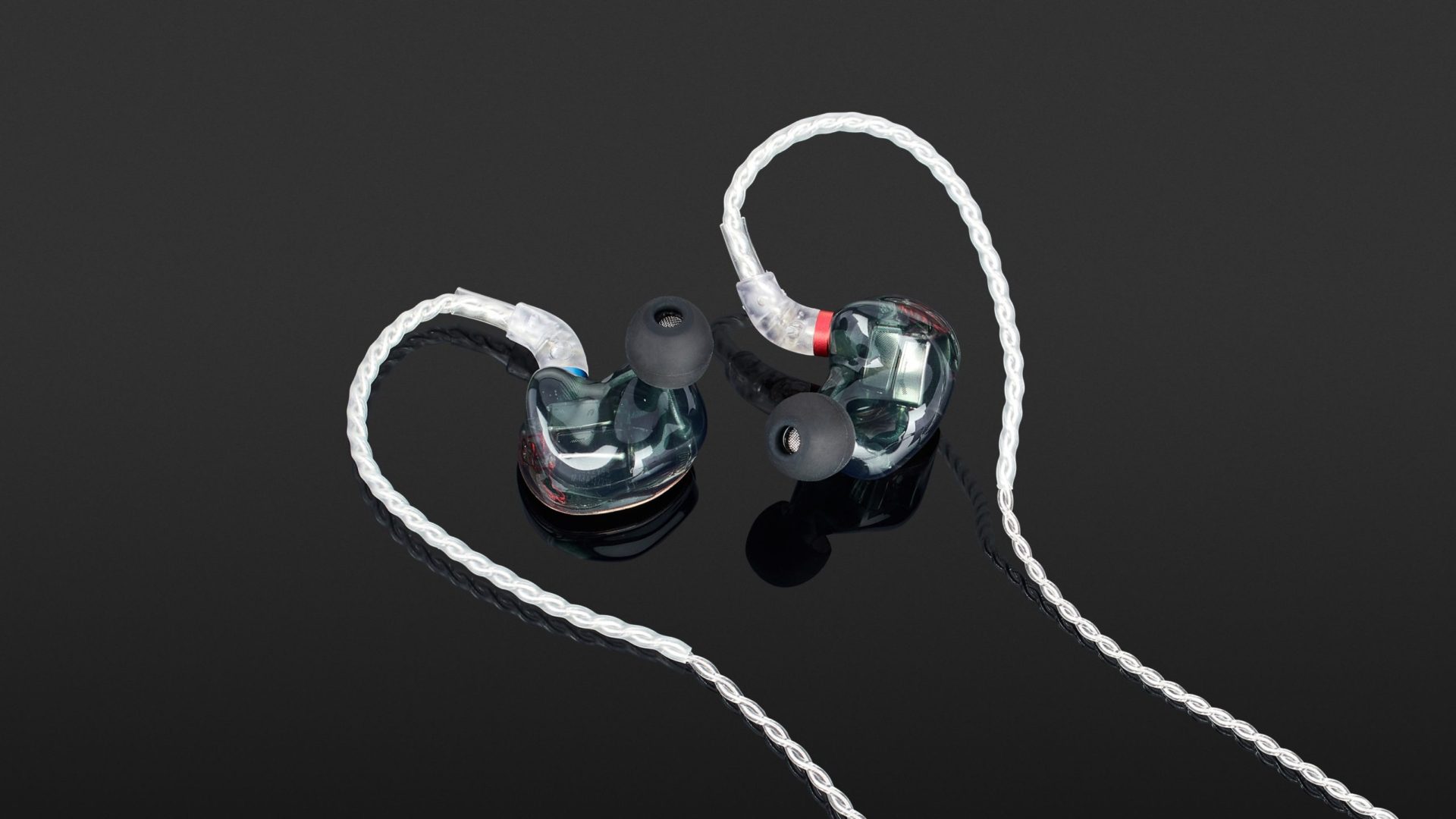NXEars Basso has to compete with a considerable crowd of attractive rivals at a price of around 500 euros. The newcomer’s unambiguous positioning as an IEM for fans of sophisticated bass helps here. Thanks to technical improvements in the design and wiring of the balanced-armature drivers, Basso performs at a high level in terms of sound and is particularly well-suited for use in longer listening sessions.
After Opera, NXEars’ flag-ship model impressed us with precision and bombast, the upper mid-range is being put to the test with the NXEars Basso. For around 500 euros, you get an in-ear monitor aimed at bass heads that is much more than a scaled-down version of the Opera.
Features
The Basso has four balanced-armature drivers mounted on either side in a three-way array. The two “woofers” are the largest BA drivers offered by Knowles. A solid copper plate is designed to prevent resonance in the transparent, 3D-printed resin enclosures, and it gives these IEM (in-ear monitors) a classy look. The feel and ergonomics of these earphones are equally high quality. And thanks to the protective grille that is almost flush with the sound tube, cleaning them is easy.
Silicone tips in S, M, L and memory foam plugs in M and L are included in the package. Third-party earmoulds or attachments can also be used. A solid, brown case made of imitation leather with dividers offers enough space for the IEMs, adapters and several spare plugs. The 1.20 metre long, four-core silver-vapourised copper cable is securely connected to the earphones thanks to an MMCX connector, which is colour-coded and rotatable through 360 degrees. For a surcharge of about 50 euros, an eight-core monocrystalline copper cable of the same length is available as an alternative.
Insertion
As with all IEMs, the sound quality of the Basso depends upon the earpieces having the correct fit. As with the top-of-the-line Opera, NXEars uses phase-corrected crossovers to power each of the four drivers. Two of the four BA drivers provide distortion-free bass reproduction, and there’s one each for mid and high frequencies. To prevent fatigue and pressure in the ear canal, NXEars has developed a technique called “Aperiodic Ground Loading” (AGL). By making adjustments to the housing, running times and drivers, the sound is supposed to be more open, less direct and more reminiscent of closed over-ear designs. For me, the difference was actually the equivalent of choosing between open and closed headphones; this made wearing IEMs for longer periods of time much more feasible.
An IEM should sound good over as wide a range of feeds as possible, whether from wireless, a phone or a sound card. With an impedance of 25 ohms at 1 kHz, the Basso can generate enough punch even with weaker connections – although they need to be low-noise even at high levels. While I had consistently good sound on my phone (with a Lightning adapter), RME audio interface and a DJ mixer, the Basso was unusable with my monitor’s headphone output due to unbearable noise.
Sound
After spending a lot of time with NXEar’s top-of-the-line Opera, I was admittedly biased against the “cheaper” Basso. I assumed it would probably be a stripped-down model with modestly tuned bass. In fact, the sound character could not be more different. As the name suggests, the sound of the Opera could be compared to a large stage complete with an orchestra. Basso, on the other hand, had a narrower, more focused sound. Everything sounds a little closer and more intimate than with the immersive Opera. The Opera’s eight drivers can react more quickly to short transients, always with the aim of producing the most precise sound possible. Basso had other ambitions and thus its own character. While the Opera’s bass range remains neutral and somewhat bland, Basso extends the sub-bass a little further down and offers an analogue warmth, especially in the transition from bass to lower mids, something that I haven’t heard from IEMs before. Bass drums and other bass instruments grooved together without losing clarity or obscuring vocals. High frequencies were reproduced with a little more emphasis, but some high-frequency details, such as the reverberation of cymbals, were blurred. The advantage of this is that even poorly recorded productions, MP3s and YouTube videos can be enjoyed with Basso.
Basso definitely showed off its strengths with pop productions, electronic music and hip-hop. The reserves of bass provided the necessary pressure. Mixes with only a few instruments sounded as if they originated from a single source. On the other hand, orchestral recordings, ambient and fast metal were more problematic, as the single driver for high frequencies significantly blurred the details at loud listening volumes.
The design of Basso’s drivers and crossovers achieved a symmetrical “U” shape of the loudness curve above a medium volume setting. Also known as the Fletcher-Munson curve, this maps the natural sensitivity of our ear and states that our hearing is more sensitive to midrange frequencies than to high and low frequencies, especially at quiet levels. As befits a loudness curve, the mids were therefore evenly lowered; there was no hole in the sound image as with the less appreciated “V” sound image.
Technical specifications
- Ear couplingIn-ear
- Typeclosed
- Transducer principleBalanced Armature
- Impedance25 ohms
- Cable length120 cm
What's in the box
- 2 pairs of memory foam ear tips (M, L)
- 3 pairs of silicone ear tips (S, M, L)
- Collar clip
- Cleaning tool
- Carrying case















































